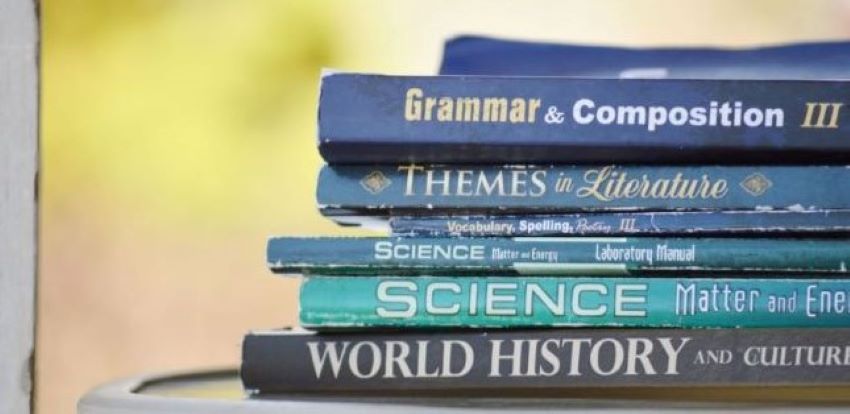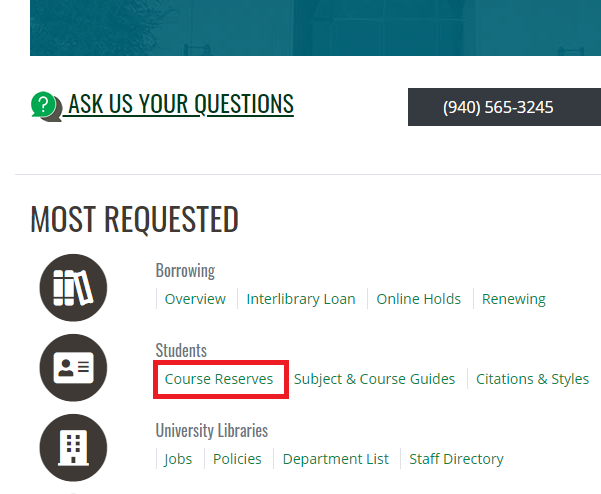
Pile of textbooks by Clarissa Watson licensed under Unsplash
So what exactly is a course reserve? A course reserve is an item that has been selected as required or recommended reading for a class and is being held behind a library services desk. These items can be checked out by students taking the class and often have shorter check out periods than items in the general collection. Shorter check out periods ensure other students in the class an opportunity to check the item out.
The most common items placed on course reserve are textbooks. Textbooks placed on course reserve are personal copies provided by the faculty member teaching the course and are not purchased by the library. Due to this condition, the library does not have textbooks on reserve for every single class. It may be worth mentioning to the instructor if there is ever a need for a textbook course reserve for your class.
Other items that may be placed on reserve are books from the library general collection and e-reserves. If an instructor selects a book for reading in a class and the library already owns a copy, then the instructor can request it for course reserve to ensure it is available for the class to read. These can be physical items placed behind the library services desk for reduced check out periods or they may be a link in the catalog that connects to an e-book or journal article.

Screenshot of Course Reserves link on UNT Library website
What if your course code doesn’t appear on the list? There are several options you can do if this happens. If there are other course codes on the list, it may be helpful to check them to see whether a professor from another class has placed the item on reserve. You can also try searching the library catalog by title to see if it is in the library’s general collection. If you still can’t find the item you need, then it may be worth having a conversation with your instructor to see if they have a personal copy they would like to lend to the library.
You can find more information about our Course Reserves on the library website. If you have any thoughts or questions, please feel free to let us know at AskUs@unt.edu or leave a comment in the comment form.



Aircon
I go through with this article and I found it really very informative, keep sharing such kind of information.
Katya Higgins Photography
Understanding course reserves demystifies library jargon and facilitates academic success. It’s a strategic resource, ensuring equitable access to essential materials for students across disciplines. Thanks for sharing this.
Aress
This article was very informative!
HostDime India
Thanks for getting me back into reading again. I really enjoyed the stuff you shared in the form of blogs. Keep writing.
Hosting Service Provider
Course reserves are essential for accessing required or recommended reading for classes. Items on reserve, like textbooks, often have shorter checkout periods to ensure availability for all students. Textbooks are usually provided by faculty rather than purchased by the library. To check if an item is on reserve, visit the library’s website and search by course code or instructor name. If you can’t find what you need, consider contacting your instructor or the library for further assistance.
Websiteaid
Thank you for this insightful post! It’s great to have a clear explanation of how course reserves work, especially since students often find themselves confused by library-specific terms. The emphasis on equitable access to textbooks and required materials is especially important for ensuring academic success. I appreciate the reminder that we can also request faculty to put textbooks on reserve—definitely a resource more students should take advantage of!
Michael Carter
Thank you for clarifying the concept of course reserves. Understanding how to access these resources is invaluable for students aiming to stay on top of their coursework.